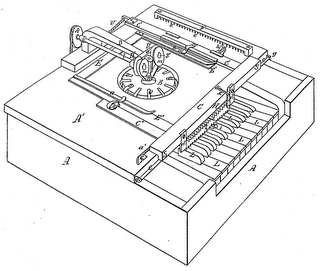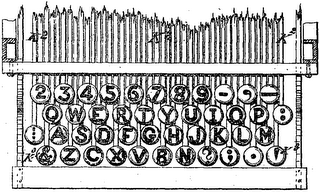Porter's Telegraph College The most complete Telegraph School in the country, having Five Departments. Each Department complete in itself, viz: Primary, Penmanship, Type Writing, Air-Line Telegraph, Lectures.
No. 126 Washington Street,
(Court House Square)
CHICAGO, ILL.
The Chicago City Telegraph Line in connection with this Institution is Forty Miles in extent, and supports Fifty Offices wherein students may earn their board after two months' practice, and before graduating may earn back their entire Tuition.THE AMERICAN TYPE WRITER. By touching keys like a Piano this machine produces letters faster than the most rapid penman. Its use in this College enables Students to become expert Telegraphers without regard to their penmanship.
Competing Telegraph Lines are increasing the demand for Operators. Young Men and Ladies should consider the advantages of a Telegraphic Education.
For Type Writer and College Circulars, addressE. PAYSON PORTER,
Principal Porter's Tel. Col., Chicago, Ill.-- Saint Joseph Herald, Vol.3, No.29 (November 21, 1868), p.3, l.7.
In 1868, Mr. Christopher Latham Sholes' Type Writer was adopted by Porter's Telegraph College, Chicago. It was his second model and, being different from his first model, it had a piano-like two-row keyboard (shown below, taken from U. S. Patent No.79265). It had twenty-eight keys, thus it could print capital letters (A to Z), comma and period, but not numerals (cf. "Writing by Machinery", Milwaukee Daily Sentinel, Vol.26, No.236 (October 6, 1869), p.1, l.4). Furthermore, its printing result was too thin to read. Therefore, Mr. Sholes began to improve his Type Writer, first in its platen (cf. U. S. Patent No.118491), then in its keyboard (cf. U. S. Patent No.182511). 
 Mr. Christopher Latham Sholes' first type-writing machine, whose patent was filed on October 11, 1867, had a two-row keyboard, neither single-row nor piano-like (shown right, taken from
Mr. Christopher Latham Sholes' first type-writing machine, whose patent was filed on October 11, 1867, had a two-row keyboard, neither single-row nor piano-like (shown right, taken from 

